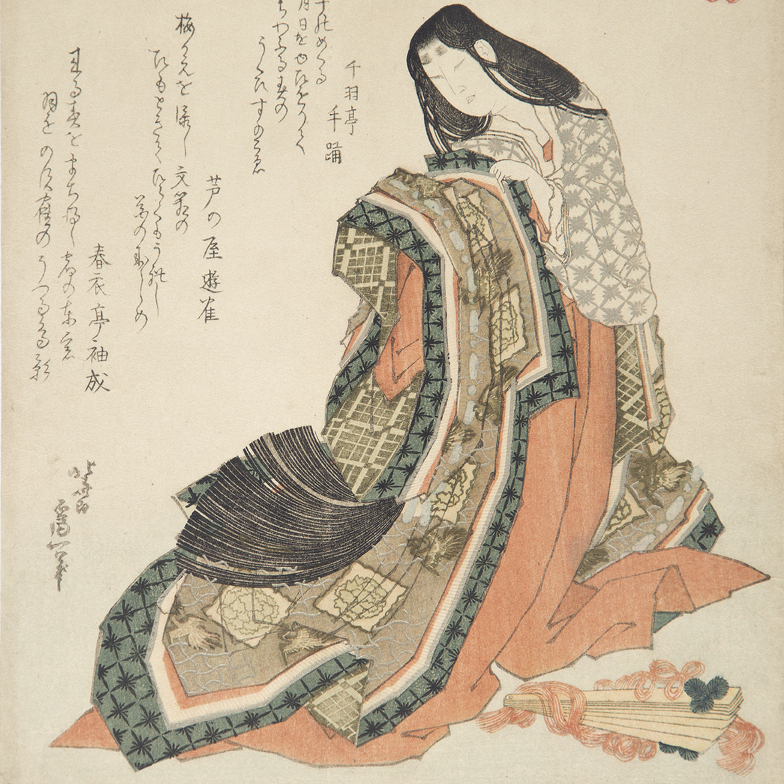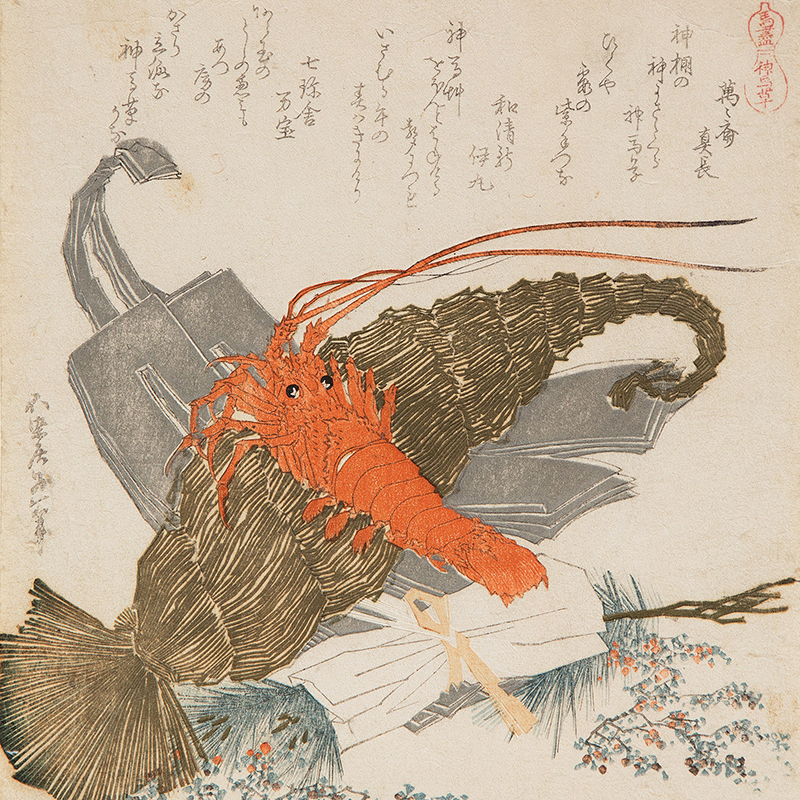Katsushika Hokusai
1760 - 1849
Sandara Kasumi
1798
Horizontal aiban, mm 220 x 316
Signed: Hokusai Sōri ga
From the poetry album Sandara kasumi (the Mist of Sandara), 1798, which was privately published by the Kasumi poetry Club. The other two plates in this album are designed by Kitao Shigemasa (1739-1820) and Hasegawa Settan (1778-1843).
Fine impression, colour and condition.
A woman offers tea to a traveller who is looking at a man turning the ivory rings for making kagamibuta netsuke, a type of netsuke fitted with a metal cap. In the background is a screen decorated with prints, one appears to be a surimono depicting the sun rising above pine trees on New Year’s morning. On the left of the workshop is Mount Fuji.
Another very fine impression of this print is preserved at the Art Institute of Chicago, Clarence Buckingham Collection, 1925.3205
Reference:
Giancarlo Calza, Hokusai, il vecchio pazzo per la pittura, Electa, Milan, 1999, page 137, II23.
Information on the master
Katsushika Hokusai, dominated the scene of the art of the Japanese print (Ukiyo-e) in the field of book illustration, drawing and painting. He was born in the Honjo district of Edo. His passion for art began at an early age; he was adopted by an illustrious family of artisans who introduced him to wood engraving. This influenced his career and at the age of 18 he entered at the studio of Katsukawa Shunso (1726-1793), who specialised in prints depicting the popular Kabuki theatre. Under the pseudonym of Shunro, around the 1780s, he got to know artists like Shigemasa (1739-1820) and Kiyonaga (1752-1815) who influenced his drawing of figures. Around 1790 he produced his first important prints which he signed Kako. He also produced fine Surimono. In 1797 he married and took the name Hokusai, becoming one of the foremost illustrators and artists of Japan. Among his most famous work are the ehon, books of images, as the 15 albums of drawings entitled Manga. The most celebrated of his prints series is The thirty-six views of Mount Fuji, early thirties. Amongst his many pupils: Shinsai, Hokuju, Hokuba, Hokkei, Shigenobu.
Other works of the master









